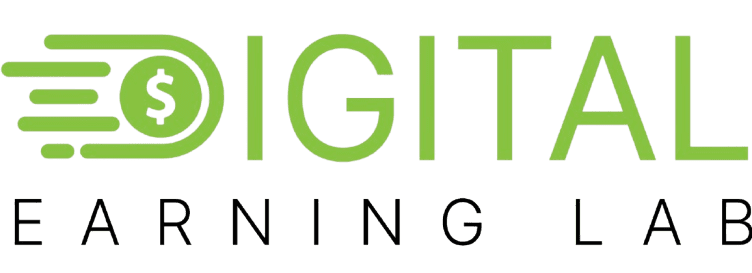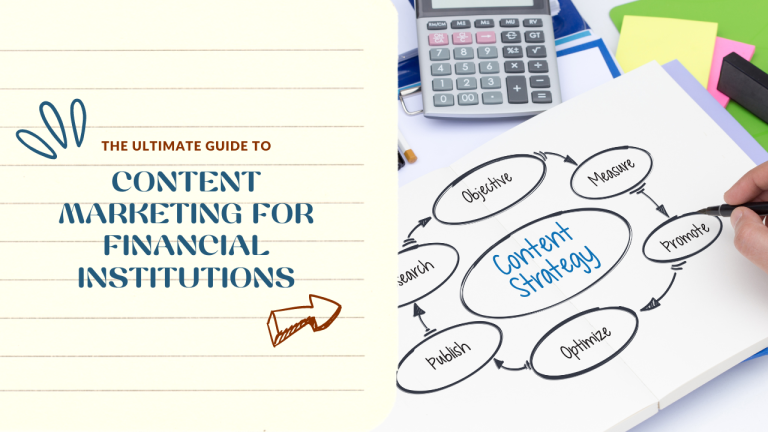Content marketing for financial institutions helps build trust and engage clients through valuable content. Learn strategies to improve customer retention and drive growth.

Key Takeaways
- Content marketing is a smart way to share valuable content with your audience. It helps you attract and keep the right people interested.
- Financial institutions can use content marketing to show they’re leaders in their field. It helps educate and connect with their audience.
- To make a great content strategy, know your audience, set clear goals, and offer a variety of content.
- It’s important to share your content in the right places and track how well it’s doing. This helps you see if your efforts are working.
- Creating good content regularly and focusing on your customers is key. It builds trust and keeps people engaged with your financial institution.
Understanding the Power of Content Marketing
It is no surprise that in modern society, the traditional approach of advertisements may not work anymore. In the 21st century, even the financial companies have started using content marketing as a means to interact with people, earn their trust, and fight competition. But what is this content marketing and why does it matter for financial brands?
What is Content Marketing?
Content marketing is a strategy that involves creating and sharing useful, relevant, and regular content. This is done to attract and keep a specific audience that the content is aimed at.
Why is Content Marketing Crucial for Financial Institutions?
It assists in the limiting of risks and gaining a better understanding of the marketplace or making purchase decisions. Financial services in their case can be overly complicated and perhaps intimidating to understand which will certainly make it a challenge to find means of making smart decisions. There is where content marketing comes to play as it provides the people with presentation materials, ideas and recommendations. This makes them build credibility, exhibit their expertise and position themselves nicely as a trusted guide in their client’s financial journey.
In addition, content marketing is effective in conducting inbound marketing as well as in executing digital marketing strategies. It assists financial brands in attracting and retaining their intended audience without spending money on advertising. Consequently, by producing customer-oriented content, financial institutions can boost the traffic to their websites, increase the number of inquiries made and enhance the relationship with their client base.
In the competitive financial services marketing world, content marketing is a must for financial companies to stand out, improve their image, and stay in their customers’ minds. By always sharing valuable and interesting content, financial brands can earn a loyal fan base, build stronger connections, and grow in a lasting way.
Crafting an Effective Content Strategy
Creating a strong content strategy is key to good financial services marketing. It makes sure your content planning and content creation match your business goals. This way, you can really connect with your audience.
To make a great content strategy, follow these steps:
- Set clear content marketing goals that help your business grow. These might be to get more people to know your brand, teach customers, or get more leads.
- Do deep audience research to know who your audience is, what they need, and what content they like.
- Make a content calendar that shows what topics, formats, and ways you’ll share your content creation.
- Create a system to keep your content consistent, high quality, and in line with your brand.
- Keep an eye on how well your content is doing and use the data to make it even better over time.
“A well-crafted content strategy is the foundation for delivering valuable, engaging, and impactful content that resonates with your financial services audience.”
By taking these steps, you can make a content strategy that meets your business goals. It also makes your financial institution a trusted and knowledgeable voice in the field.

Identifying Your Target Audience and Their Needs
Understanding who your intended audience is becomes imperative if one wishes to successfully market a financial service. It’s easy to craft appropriate content once you’ve created buyer personas and figured out what pains them the most. This content assists them with overcoming their financial obstacles and helps them achieve their objective.
Defining Your Buyer Personas
Buyer personas can be described as insightful fiction about your prospects and what makes them tick. Developing such effective personas requires one to dig deep into the customer. This research may include demographics, behaviors, motivations, and pain points. Knowing all these enables them to create appropriate content.
- Gather data on your target audience through surveys, interviews, and market research.
- Identify the common characteristics, goals, and challenges of your ideal customers.
- Create detailed profiles for each buyer persona, including their background, interests, and decision-making process.
Analyzing Your Audience’s Pain Points
With a clear picture of your buyer personas, it’s time to explore their pain points. These are the specific challenges and frustrations they face in their financial lives. By addressing these pain points in your financial services marketing content, you can show your brand as a trusted partner.
| Pain Point | Potential Content Ideas |
|---|---|
| Confusion about complex financial products | Explainer videos, educational blog posts, FAQs |
| Difficulty saving for long-term goals | Budgeting tips, retirement planning guides, investment strategies |
| Concerns about cybersecurity and fraud | Security best practices, identity protection resources, fraud prevention tips |
By deeply understanding your target audience and their unique needs, you can create a content strategy that truly resonates. This strategy establishes your financial institution as a valuable resource for your customers.
Creating Engaging and Valuable Content
In the world of finance, content is key. It helps build trust, educate, and show your brand’s reliability. By making engaging and valuable content, you can keep your audience’s attention. This can help your financial organization grow and succeed.
Types of Content for Financial Institutions
Financial institutions can use many types of content to reach their audience. Some top choices include:
- Informative blog posts on trends, tips, and education
- Visually appealing infographics that make complex ideas simple
- Captivating videos that show your expertise and product demos
- Thought-provoking whitepapers and reports on industry research
- Engaging social media content that shows your brand’s personality
Best Practices for Content Creation
To make content that truly engages and informs, follow these best practices:
- Prioritize quality over quantity: Focus on creating valuable, in-depth content, not a lot of mediocre stuff.
- Tailor content to your audience: Know your target audience well and make content that meets their needs and interests.
- Leverage visual elements: Use images, infographics, and videos to make your content more impactful and memorable.
- Optimize for SEO: Make your content easy to find by using relevant keywords and following SEO best practices.
- Consistently publish and promote: Keep a regular schedule for creating and sharing content to keep your audience interested and build trust.
By following these practices and using different content types, financial institutions can create engaging and valuable content. This content will resonate with your audience and help your business grow.

“Content is the foundation of any successful marketing strategy, and that’s especially true in the financial industry. By creating content that educates, informs, and inspires, you can build trust, establish your brand as a thought leader, and ultimately drive growth for your organization.”
Promoting Your Content and Measuring Success
In today’s digital world, just making content isn’t enough. You need to promote it well and track important metrics. This ensures your financial institution’s marketing efforts pay off.
Content Distribution Channels
Choosing the right content distribution channels is key. For banks, some top options include:
- Social media marketing for banks, where you can share your content on platforms like LinkedIn, Twitter, and Facebook to engage with your target audience.
- Search engine optimization (SEO) for finance, which helps your content rank higher in search engine results and ensures it is easily discoverable by your potential customers.
- Email marketing, where you can curate and distribute your content directly to your subscribers’ inboxes.
- Partnerships and guest posting on industry-relevant websites to expand your content’s reach.
Key Performance Indicators (KPIs) for Content Marketing
It’s vital to measure your content marketing success. This helps you see what works and what doesn’t. Key KPIs to watch include:
| KPI | Description |
|---|---|
| Website Traffic | The number of visitors to your website and the pages they engage with. |
| Lead Generation | The number of new leads (potential customers) your content generates. |
| Engagement Metrics | Metrics like time on page, bounce rate, and social shares that indicate how your audience is interacting with your content. |
| Conversion Rate | The percentage of visitors who take a desired action, such as making a purchase or signing up for a service. |
| Return on Investment (ROI) | The financial return generated by your content marketing efforts. |
By regularly checking and analyzing these analytics, you can learn a lot. This helps you make smart choices to boost your content marketing.
Content marketing for financial institutions examples
Content marketing for financial institutions can take many forms, helping build trust and engage clients. Examples include educational blog posts that explain financial concepts in simple terms, like “How to Save for Retirement” or “Understanding Mortgages.” Video tutorials can break down complex topics, while email newsletters provide personalized advice or market updates. Case studies are another great tool, showcasing how a bank helped a small business thrive. Social media posts with tips on budgeting or investing can reach a wider audience. All of these approaches keep clients informed, build loyalty, and position financial institutions as helpful, reliable partners.
Conclusion
n this guide we have highlighted the difference that governed content marketing for financial institutions as you can envisage yourself changing the game, You are also aware of the crafting of a content plan that will please the target audience. This plan will ensure growth for your institution in terms of business.
We explained how to approach your financial services marketing agenda in order to enhance the sales of your services. There is a lot that you are going to learn in your marketing career by blending digital marketing and inbound marketing. Yours is to create firm customer relationships.
Beginning on that note of considering taking steps towards content marketing. Always check the performance as in whether it is achieving the desired results, make appropriate and necessary modifications to the strategies and learn about the current and future needs of technology. The continued application of this guide will be beneficial to your financial institution in the years to come.
FAQ
What is content marketing, and how can it benefit financial institutions?
Content marketing aims at producing valuable content and then sharing it with your audience so you can gain and retain them. This option for banks and credit unions is really efficient because it enhances the customer trust and shows your professional competence. Moreover, it serves as a medium of educating the public and so its impact is the increase of the customer base.
How do I develop an effective content strategy for my financial institution?
First, determine what you want and who you are listening to. Conduct some keyword analysis and design the content accordingly. Ensure that you monitor your content performance statistics, and change direction as necessary.
What types of content work best for financial institutions?
What banks and credit unions can do to create such good content are publishing educational blogs, videos, and infographics. Besides that, you can present the articles that indicate you’re still the cutting-edge in the sector, and applying the calculators to help people. The purpose here is to provide value and help the audience solve their problems.
How can I promote my financial institution’s content to reach a wider audience?
To get more eyes on your content, use social media, SEO, and email newsletters. Work with influencers and share your content in different ways. This helps more people see what you’re offering.
What are some key metrics I should track to measure the success of my content marketing efforts?
Keep an eye on website visits, leads, engagement, and how well your content is doing. Make sure your goals match your business’s goals. This way, you know your content marketing is working.
<script type="application/ld+json">
{
"@context": "https://schema.org",
"@type": "Article",
"mainEntityOfPage": {
"@type": "WebPage",
"@id": "https://digitalearninglab.com/content-marketing-for-financial-institutions/"
},
"headline": "The Ultimate Guide to Content Marketing for Financial Institutions",
"description": "The Ultimate Guide to Content Marketing for Financial Institutions",
"image": "https://digitalearninglab.com/wp-content/uploads/2024/10/Orange-Tutorials-YouTube-Thumbnail-1-1024x576.png",
"author": {
"@type": "",
"name": ""
},
"publisher": {
"@type": "Organization",
"name": "",
"logo": {
"@type": "ImageObject",
"url": ""
}
},
"datePublished": ""
}
</script>

